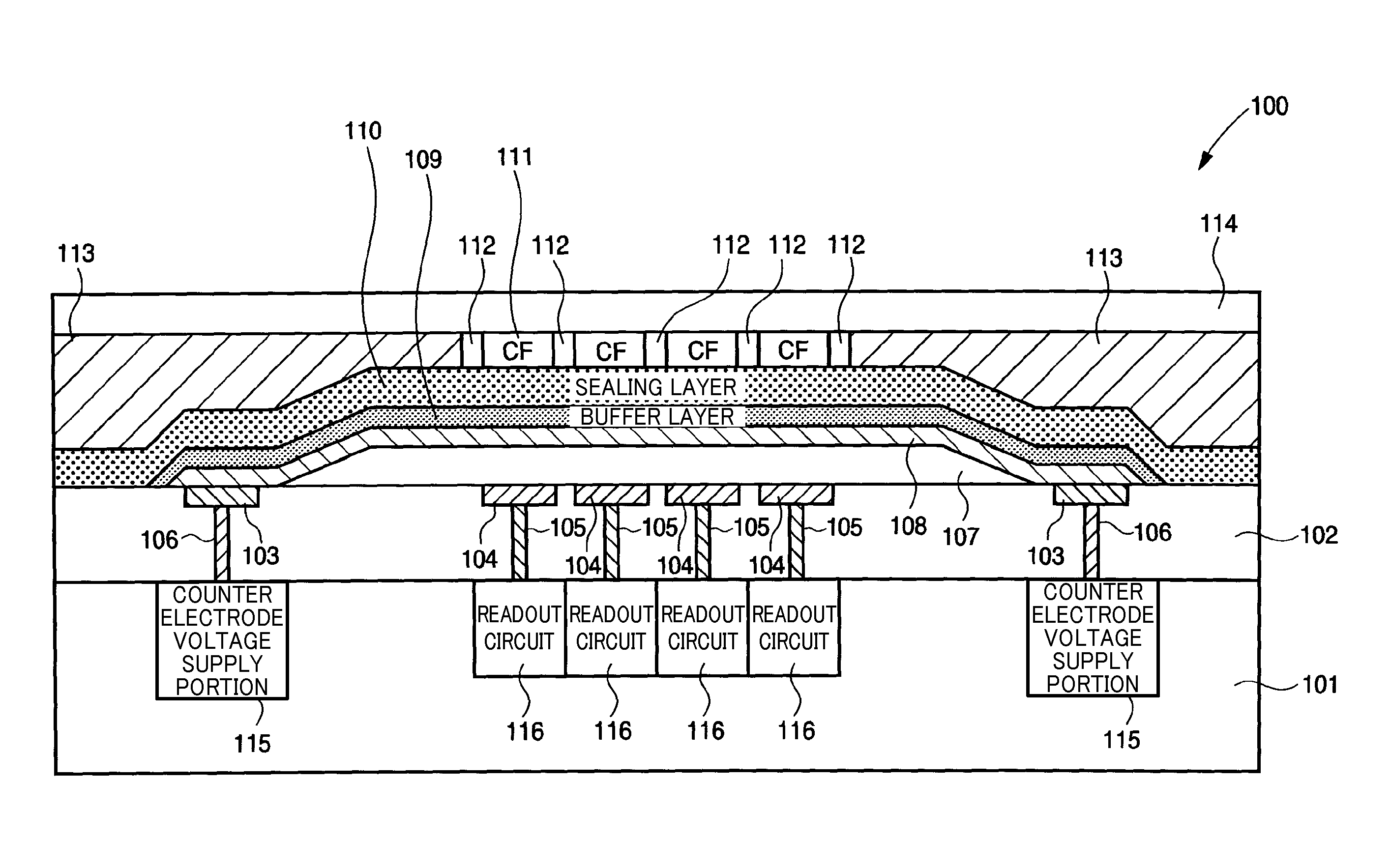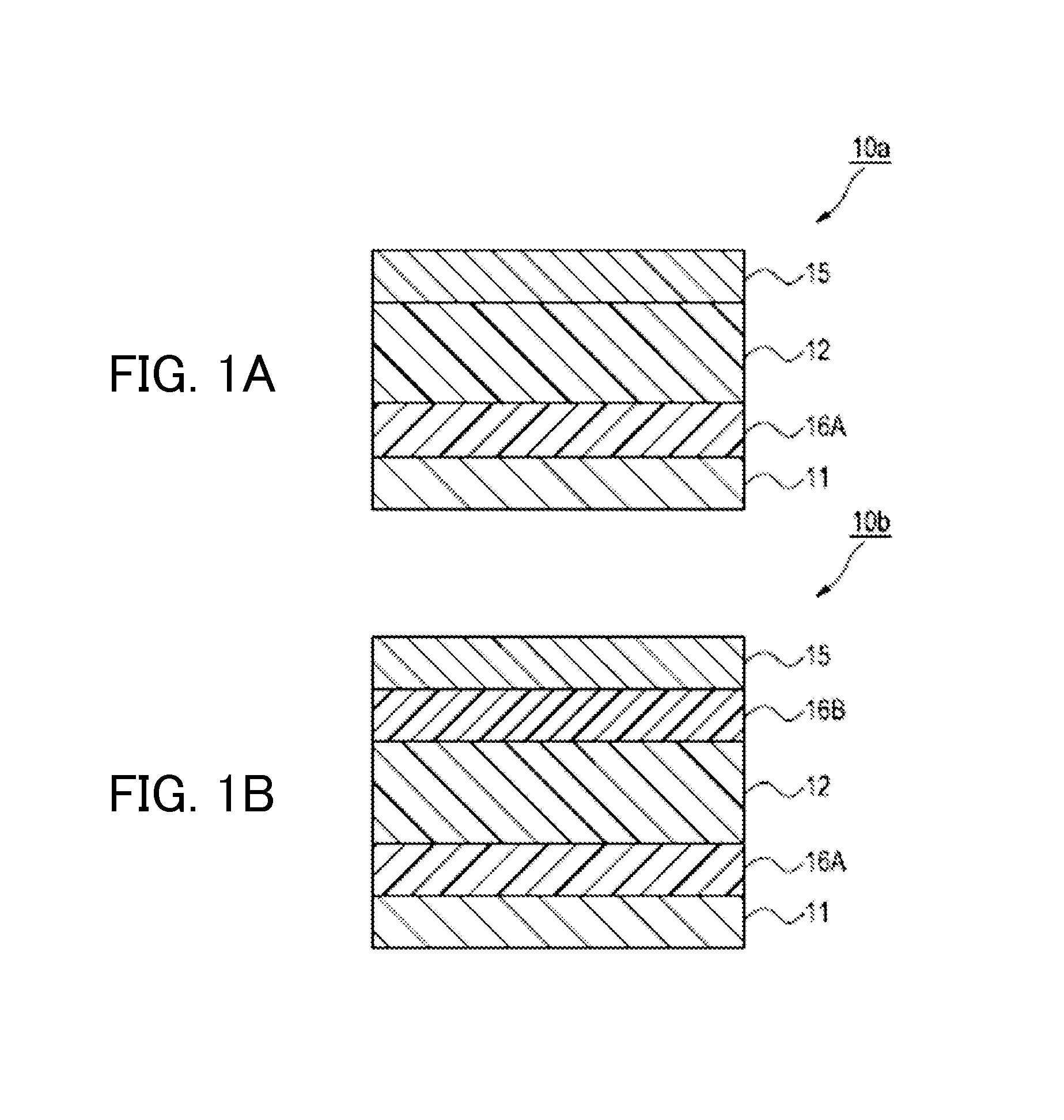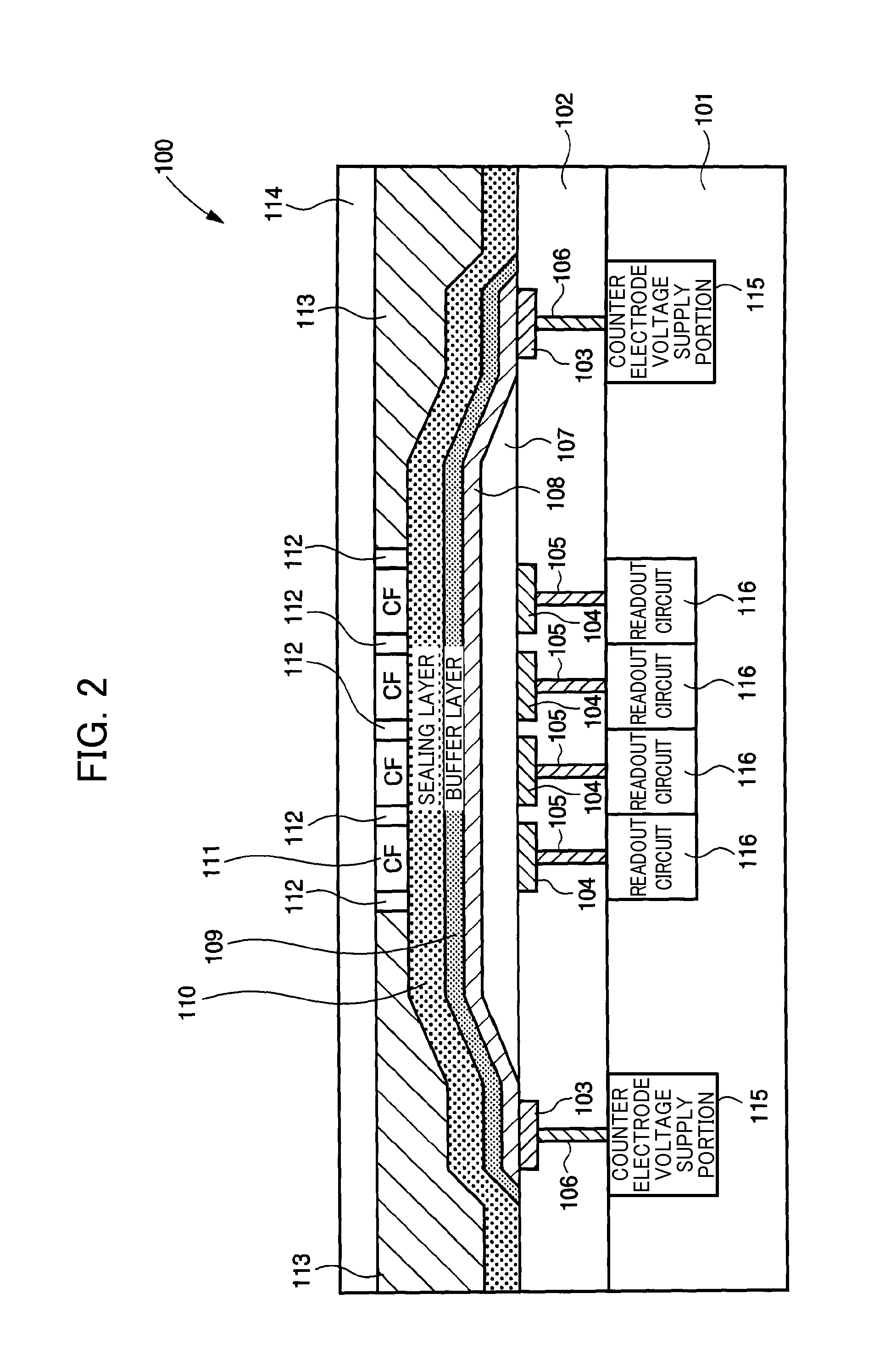Photoelectric conversion element and method of using the same, image sensor, and optical sensor
a technology of photoelectric conversion and image sensor, applied in the field of photoelectric conversion element and a method of using the same, an image sensor, and an optical sensor, can solve the problems of poor light use efficiency, decrease in aperture ratio, and decrease in light collection efficiency, and achieve low dark current characteristics, high photoelectric conversion efficiency, and high productivity
- Summary
- Abstract
- Description
- Claims
- Application Information
AI Technical Summary
Benefits of technology
Problems solved by technology
Method used
Image
Examples
example 1-1
[0258]A photoelectric conversion element having the form of FIG. 1A was prepared. The photoelectric conversion element includes the lower electrode 11, the electron-blocking layer 16A, the photoelectric conversion layer 12 and the upper electrode 15. In other words, an amorphous ITO film with a thickness of 30 nm was formed on a glass substrate by sputtering and used as the lower electrode, and Compound (B-1) was then deposited to a thickness of 100 nm by vacuum heating vapor deposition to form the electron-blocking layer. Compound (A-1) (photoelectric conversion dye) (vapor deposition rate: 0.4 angstrom / s (0.4×10−10 m / s) and fullerene (C60) were further co-deposited on the electron-blocking layer by vacuum heating vapor deposition to thicknesses, in terms of the single layer, of 100 nm and 300 nm, respectively, while controlling the temperature of the substrate to 25° C., thereby forming the photoelectric conversion layer. Amorphous ITO was further deposited for the upper electrode...
examples 1-2 to 1-143
and Comparative Examples 1-1 to 1-80
[0259]The procedure of Example 1-1 was repeated except that Compound (B-1) used for the electron-blocking layer and Compound (A-1) used for the photoelectric conversion layer which were used in Example 1-1 were changed as shown in Table 1, thereby preparing photoelectric conversion elements.
examples 1-144 to 1-234
and Comparative Examples 1-81 to 1-95
[0260]The procedure of Example 1-1 was repeated except that the vapor deposition rate of the photoelectric conversion dye was set to 2.0 angstroms / s (2.0×10−10 m / s) and Compound (B-1) used for the electron-blocking layer and Compound (A-1) used for the photoelectric conversion layer which were used in Example 1-1 were changed as shown in Table 1, thereby preparing photoelectric conversion elements.
[0261]The structural formulae of Illustrative Compounds used in Examples (materials for forming the electron-blocking layer and materials for forming the photoelectric conversion layer) are shown below.
[Evaluation: Evaluation of Voltage Application]
[0262]It was confirmed that, as a result of application of a voltage to the lower electrode and the upper electrode of each of the resulting elements so that the electric field intensity reaches 2.5×105 V / cm, every element shows a dark current of 100 nA / cm2 or less in a dark place but a current of 10 μA / cm2 o...
PUM
| Property | Measurement | Unit |
|---|---|---|
| Tg | aaaaa | aaaaa |
| vapor deposition rate | aaaaa | aaaaa |
| heat resistance | aaaaa | aaaaa |
Abstract
Description
Claims
Application Information
 Login to View More
Login to View More - R&D
- Intellectual Property
- Life Sciences
- Materials
- Tech Scout
- Unparalleled Data Quality
- Higher Quality Content
- 60% Fewer Hallucinations
Browse by: Latest US Patents, China's latest patents, Technical Efficacy Thesaurus, Application Domain, Technology Topic, Popular Technical Reports.
© 2025 PatSnap. All rights reserved.Legal|Privacy policy|Modern Slavery Act Transparency Statement|Sitemap|About US| Contact US: help@patsnap.com



